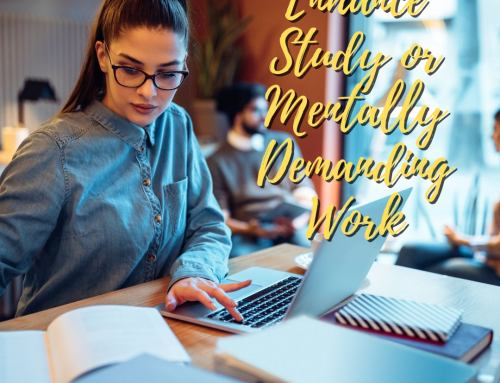If cats are part of your family and you like using essential oils to support your family’s health, please read this article as it introduces you to the safe use of essential oils with and around your cats. It also provides important tips regarding precautions you can take with essential oils that may be potentially toxic to your cat but would benefit your own health. Learn how to use these essential oils in a safe and responsible manner that does not negatively impact your cat’s health.
Why can essential oils be a problem for cats?
Cats are sensitive to essential oils for a few reasons.
- Cats have a very acute sense of smell.
Cats have twice as many receptors in their olfactory ephithelium than people and also have a scent organ in the roof of their mouth. - Cats have delicate and thin skin.
Anything applied topically will have quicker absorption into the bloodstream. Remember, when diffusing essential oils into the air, there will still be absorption through the skin, just in lower ratio than what is absorbed through inhalation. - Cats lack important liver enzymes that humans posses.
Cats can’t efficiently metabolize some of the compounds in certain essential oils, which can lead to toxic build-up in their bodies over time (glucuronosyltransferase (UGT) enzymes).
Which Essential Oils can be potentially toxic to cats?
Cats can’t efficiently metabolize phenols, ketones, d-limonene and alpha-pinene, so over time toxic buildup can occur.
Examples of essential oils containing higher amounts of Phenols – Wintergreen, Anise, Birch, Clove, Basil, Tarragon, Fennel, Oregano, Thyme, Mountain Savory, Peppermint, Melaleuca (Tea Tree), Calamus, Cinnamon Bark, Citronella, Marjoram, Nutmeg, Eucalyptus citriodora, Parsley, Ylang Ylang. These all contain greater than 8% phenols.
Examples of essential oils containing higher amounts of Ketones – Western Red Cedar, Idaho Tansy, Marigold, Spearmint, Thuja, Hyssop, Davana, Sage, Dill, Yarrow, Peppermint. All these oils contain greater than 20% ketones.
Example of essential oils containing higher amounts of D-Limonene – Grapefruit, Bitter Orange, Orange, Tangerine, Mandarin, Lemon, Celery Seed, Lime, Bergamot, Angelica, Dill, Neroli, Blue Tansy, Citronella and Nutmeg.
Examples of essential oils containing higher amounts of Alpha-pinene – Cypress, Cistus, Pine, Douglas fir, Juniper, Myrtle, Rosemary Verbenon, Silver Fir, Angelica, Nutmeg, Eucalyptus, Dill, Spruce. These are all monoterpenes that have alpha-pinene concentrations greater than 15%.
Essential Oils that may be used with cats with CAUTION (and I highly suggest under the guidance of a holistic veterinarian or certified aromatherapist): Black Pepper, Cardamon, Carrot Seed, Celery Seed, Cinnamon Bark, Citronella, Clove, Galbanum, Ginger, Juniper, Palmarosa, Petitgrain, and Western Red Cedar.
If your cat has liver or kidney trouble make sure to avoid essential oils high in Ketones, Phenols, D-Limonene, and Alpha-pinene.
Which Essential Oils are generally considered safe with and around cats?
Make sure to use only the highest quality essential oils available (doTERRA CPTG Essential Oils – certified pure tested grade) appropriately diluted or diffused, with care and common sense and ALWAYS consult with a holistic vet or certified aromatherapist if you have concerns or questions or your cat suffers from any illnesses.
- Clary Sage Essential Oil
- Frankincense Essential Oil
- Geranium Essential Oil
- Helichrysum Essential Oil
- Lavender Essential Oil (NOT Lavendin)
- Roman Chamomile Essential Oil
- Valerian Essential Oil
Which essential oils support which body systems?
- Clary Sage Essential Oil
Endocrine System - Frankincense Essential Oil
Immune System, Nervous System, Skin, Emotional Balance - Geranium Essential Oil
Skin, Emotional Balance - Helichrysum Essential Oil
Skin, Cardiovascular System, Muscles and Bones - Lavender Essential Oil (NOT Lavandin – learn the difference)
Skin, Nervous System, Cardiovascular System, Emotional Balance - Roman Chamomile Essential Oil
Skin, Digestive System, Cardiovascular System, Nervous System, Muscles and Bones, Emotional Balance - Valerian Essential Oil
Emotional Balance, Digestive System, Cardiovascular System, Skin
Why some cat owners may have negative experiences even with essential oils from the ‘generally considered safe’ list?
Many essential oils available in stores today are adulterated, of very poor quality, and often created synthetically in a laboratory. Those essential oils can contain many unnatural, harmful elements. Even if they are extracted from plant materials and say ‘natural’ or ‘100% pure’ they can contain chemicals from solvent extraction, pesticides, heavy metals, microbes, mold spores, fillers, and other unhealthy or unnatural components or chemicals. Since we know cats are highly sensitive to chemicals and artificial ingredients, it could be that the toxins in inferior oils are the real culprits when cat owners have had bad experiences even with essential oils from the “generally considered safe” list (see below). 100% pure tested grade essential oils can benefit your cat’s health when used appropriately (must be appropriately diluted – see tip below). To learn about which questions to ask and how to determine whether your essential oils are of highest quality grade – read this article on essential oil quality.
7 Essential Safety Tips for Cat Owners
Just because an essential oil is on the “caution” or “potentially toxic” list does not mean that you can never use these essential oils in your home to support your own health. However, it does mean that certain precautions will need to be taken to ensure your cat is not exposed to the essential oil.
Here’s a list of tips to help keep your cat safe:
- Pick from the “generally considered safe” list whenever possible.
Select essential oils from the “generally considered safe” list whenever possible to support the health and wellness of your family, including your cat. Make sure it is a 100% pure tested grade essential oil, free of fillers, pesticides, heavy metals, microbes, mold spores, fungi, or other harmful ingredients.
- Diffuse using common sense.
When diffusing an essential oil from the “generally considered safe” list, make sure to only diffuse small amounts for limited periods of time, and make sure your cat has the freedom to leave the room if she or he wants. If you want to inhale an essential oil that is potentially toxic to your cat but would be beneficial to support YOUR respiratory system for instance (Eucalyptus, Peppermint, Clove, Melaleuca), try to diffuse in your car using an ultrasonic USB diffuser, at work, use a personal inhaler (making essential oil inhalers is easy and a great way of enjoying the aromatic benefits of essential oils without diffusing them), use an aromatherapy necklace, or diffuse in a room your cat never spends time in. This way you can fully benefit from the inhaled use of essential oils and keep your pet safe. Never diffuse an essential oil that is potentially toxic to your cat in a room it spends time in.
- Don’t pet your cat after touching essential oils.
If there is any residual essential oil on your hands and you pet your cat, the oil will get on its fur. Cats lick themselves for cleansing purposes. Your cat would be in danger of ingesting the essential oil from its fur. So be cautious and wash your hands well after using essential oils. In addition, make sure to keep the skin that you applied an essential oil to covered (long pants, long sleeved shirt, etc.) so that your cat does not rub up against you and accidentally transfers the essential oil onto its fur. Apply a drop under the soles of your feet in the morning and put on socks/shoes immediately. Click here for more information about topical use of essential oils.
- Store essential oils away from pets and kids.
Cats are very curious, mischievous, and playful capable of getting into almost anything. Even if your essential oils are sealed tightly, there will be residual oil on the bottle that your cat could lick off or get on its fur. Keep your essential oils stored in a box or cabinet your cat can not open. Same rule goes for young children. Keep your essential oils locked away and out of reach.
- Be cautious cleaning with essential oils.
Essential oils are wonderful additions to natural cleaning products but use caution and common sense, making sure your cat does not rubs against the surface you cleaned or licks it, to avoid ingesting essential oils.
- Don’t leave out dishes after cooking with essential oils.
For those of you who love to enhance flavor and therapeutic value of your dishes with essential oils, it is important to put away or clean these dishes immediately after use. Make sure your cat doesn’t eat leftover food that was prepared with essential oils.
- Appropriately dilute for topical use with cats.
Essential oils are very potent and powerful. If you have decided to use an essential oil from the “Safe” list topically to support your cat’s health be sure to highly dilute the essential oil. I generally use the safety considerations for use of essential oils with babies. which means a 0.5% dilution ratio. In other words, if you create a 10ml roll-on blend, then add 1 drop of the essential oil and fill the remainder with fractionated coconut oil. If you are trying to blend several different oils, blend the oils in a little glass container first, then use a pipette and add one drop of the blend to your 10ml bottle. A 10ml bottle equals 200 drops – so a 0.5% dilution rate equals 1 drop of essential oil.
As a Certified Aromatherapist, one of my main tasks is creating custom aromatherapy products and essential oil blends for people and pets, taking into consideration age, weight, health history, any sensitivities, and desired benefits. Many custom 10 ml roll-on blends range from only $20 to $28 and you can be assured that the highest quality essential oils are used with appropriate dilution. If you need a custom product for your pet, please contact me.
I hope this article answered some of your questions and was detailed enough for you to make an informed decision on which oils you can use safely around cats and offer you safe options to maximize the therapeutic benefits for yourself and your family. I have a cat myself and my daughter has cats as well, so this information is shared with great passion and love for our four-legged family members. Please share a link to this web page with other cat lovers to keep our beautiful felines safe!








